
In the fascinating world of beekeeping, there’s more to a beehive than just honey. From beeswax to propolis, royal jelly to pollen, the hive is a treasure trove of valuable products. In this article, we will take a closer look at the diverse range of substances that can be sourced from a thriving beehive. Join us as we explore the wonder and potential of these lesser-known bee products and discover their incredible benefits for both humans and bees alike. So, grab your beekeeper’s suit and get ready to delve into the secrets buzzing inside the hive.
1. Beeswax Products
Beeswax, a natural substance produced by honey bees, is not only known for its sweet scent and golden color, but also for its versatility and various uses. From candles to lip balm, beeswax products have become a popular choice for individuals seeking natural and eco-friendly alternatives. Let’s delve into some of the most popular beeswax products and discover their benefits.
1.1 Beeswax Candles
Beeswax candles are not your average candles. They are known for their beautiful, warm glow and long-lasting burn time. Unlike traditional paraffin candles, which can release harmful toxins when burned, beeswax candles are all-natural and produce little to no smoke.
The unique properties of beeswax allow these candles to emit negative ions when burned, which can actually help purify the air in your home. These negative ions bind to particles such as dust, pollen, and mold, causing them to fall out of the air, resulting in a cleaner and healthier environment.
1.2 Beeswax Wraps
In an effort to reduce plastic waste and become more environmentally conscious, many people are turning to beeswax wraps as a sustainable alternative to plastic wrap. Beeswax wraps are made by infusing a cotton fabric with beeswax, creating a flexible and reusable food storage solution.
With the warmth of your hands, you can mold the beeswax wrap around various food items, creating a seal that helps preserve their freshness. Beeswax wraps are not only reusable but also biodegradable, making them an eco-friendly choice for those striving to reduce their carbon footprint.
1.3 Beeswax Lip Balm
Dry and chapped lips are a common struggle, especially in harsh weather conditions. Beeswax lip balm provides a natural solution to keep your lips hydrated and protected. The waxy texture of beeswax forms a barrier on the lips, preventing moisture loss and sealing in hydration.
Beeswax lip balms are often enriched with other nourishing ingredients like coconut oil, shea butter, and vitamin E, providing additional benefits such as soothing and softening the lips. Whether it’s summer or winter, having a beeswax lip balm on hand can help keep your lips moisturized and kissable all year round.
2. Propolis: The Bee Glue
Propolis, often referred to as “bee glue,” is a resinous substance bees collect from trees and plants. They use it to seal and reinforce their hive, protecting it from the elements and potential intruders. While propolis serves as a vital component for the bees’ survival, it also offers numerous benefits for human well-being.
2.1 Propolis Uses in Skincare
Propolis is prized in the skincare industry for its antimicrobial and anti-inflammatory properties. It can help combat acne, reduce redness and irritation, and promote faster wound healing. Whether used as an ingredient in skincare products or applied directly to the skin, propolis has the potential to improve the overall health and appearance of your skin.
2.2 Propolis Tincture
Propolis tincture is a concentrated liquid extract made by soaking propolis in alcohol. Known for its antiseptic and antioxidant properties, propolis tincture is often used as a natural remedy for various ailments such as sore throat, cold sores, and minor burns. Its immune-boosting properties make it a popular choice for those seeking a natural alternative to support their overall well-being.
2.3 Propolis in Oral Health
In addition to skincare benefits, propolis can also contribute to oral health. It has been found to possess antimicrobial properties that help combat common oral issues such as gingivitis and tooth decay. Some toothpaste and mouthwash formulations incorporate propolis as a natural and effective ingredient, promoting a healthier mouth and fresher breath.
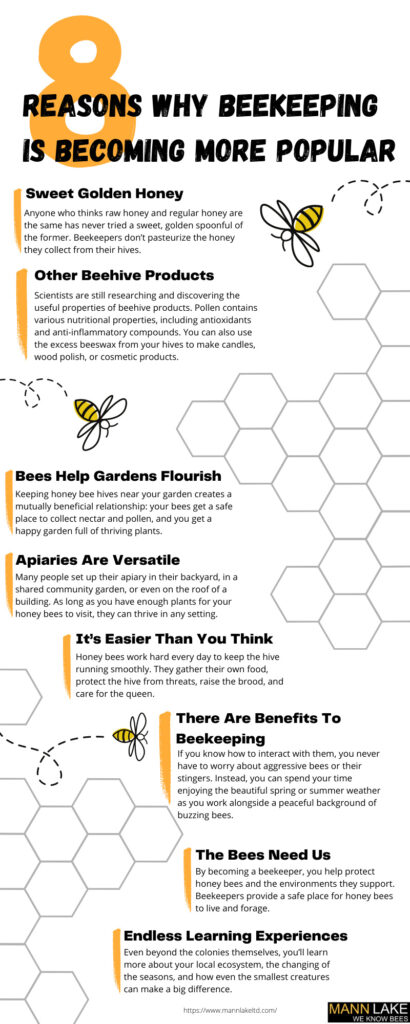
This image is property of www.mannlakeltd.com.
3. Royal Jelly: Fit for a Queen
Royal jelly is a highly nutritious substance produced by nurse bees for the sole purpose of feeding the queen bee. Packed with essential nutrients, royal jelly has gained recognition for its potential health benefits and its presence in various beauty and dietary products.
3.1 Royal Jelly Benefits
Royal jelly is rich in proteins, vitamins, minerals, and amino acids, making it a powerful source of nutrition. It has been linked to various potential health benefits, such as boosting immune function, improving skin health, and promoting hormonal balance. While further research is needed to fully understand its effects, royal jelly continues to garner attention for its nutritive properties.
3.2 Royal Jelly in Cosmetics
Royal jelly’s popularity extends to the cosmetic industry, where it is often found in high-end skincare products. Its nutrient-rich composition is believed to have anti-aging properties, promoting collagen production, and enhancing skin elasticity. With its potential to nourish and rejuvenate the skin, royal jelly has become a sought-after ingredient in luxury cosmetics.
3.3 Royal Jelly as a Dietary Supplement
For those seeking to incorporate royal jelly into their daily routine, dietary supplements offer a convenient option. Royal jelly supplements typically come in capsules or liquid form and are consumed orally. These supplements provide a concentrated dose of royal jelly’s potent nutrients, potentially supporting overall health and vitality.
4. Pollen: Nature’s Superfood
Bee pollen, often referred to as nature’s superfood, is collected by bees as they gather nectar from flowers. Packed with essential nutrients and enzymes, bee pollen can provide a wide array of health benefits when consumed.
4.1 Nutritional Value of Bee Pollen
Bee pollen is considered one of nature’s most complete foods due to its rich nutrient profile. It contains a wide range of vitamins, minerals, amino acids, and antioxidants, making it a valuable addition to a balanced diet. Incorporating bee pollen into your meals or consuming it as a dietary supplement can help support overall health and well-being.
4.2 Bee Pollen for Allergies
Contrary to popular belief, bee pollen can actually alleviate allergy symptoms for some individuals. By gradually exposing the body to small amounts of allergens found in the local environment, bee pollen may help desensitize the immune system and reduce allergic reactions. However, it is essential to consult with a healthcare professional before trying bee pollen as an allergy remedy.
4.3 Bee Pollen in Beauty Products
Bee pollen’s nutrient-rich composition has led to its inclusion in various beauty products. Facial masks, scrubs, and serums often utilize bee pollen for its potential to nourish and revitalize the skin. Whether used topically or consumed orally, bee pollen can contribute to a healthy and radiant complexion.
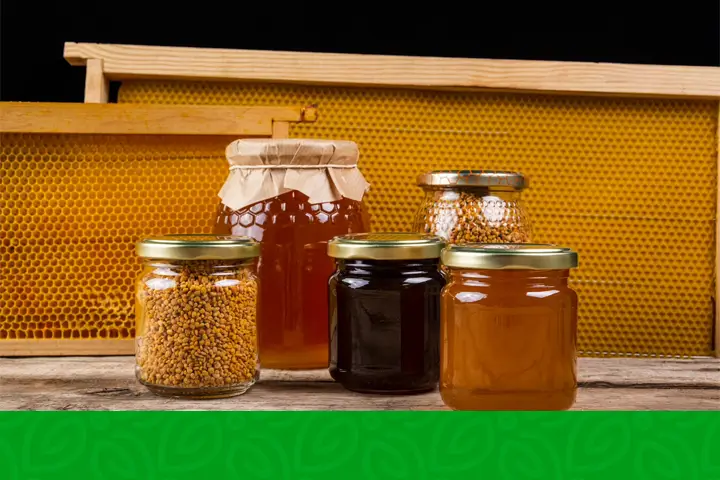
This image is property of thefarmersjournal.com.
5. Bee Venom: A Special Sting
Bee venom, the toxin produced by honey bees, may seem unusual as a product, but it has been utilized for centuries due to its potential therapeutic properties. From skincare to alternative medicine, bee venom continues to intrigue researchers and consumers alike.
5.1 Bee Venom Therapy
Bee venom therapy, also known as apitherapy, involves intentionally exposing the body to bee stings. Advocates of this alternative treatment believe that bee venom can alleviate various medical conditions such as arthritis, multiple sclerosis, and chronic pain. However, it is crucial to note that bee venom therapy should only be done under the guidance of a trained healthcare professional.
5.2 Bee Venom in Skincare
For those who prefer beauty products over stings, bee venom has made its way into the skincare industry. Certain facial serums and creams contain a synthesized form of bee venom known as “syn-ake,” which mimics the peptide found in bee venom. This ingredient is believed to have anti-aging effects, as it may stimulate collagen production and provide a temporary tightening effect on the skin.
5.3 Bee Venom Allergy
While bee venom can be beneficial for some, it can also pose a risk for those who are allergic to bee stings. If you have a known bee venom allergy, it is important to avoid products containing bee venom to prevent potentially severe allergic reactions. Always consult with a healthcare professional if you have any concerns regarding bee venom allergies.
6. Honeycomb: Nature’s Perfect Package
Honeycomb, the intricate structure built by bees to store their honey, is not just a functional marvel but also a versatile resource. Let’s explore some of the fascinating uses and benefits of honeycomb.
6.1 Comb Honey
Comb honey refers to honey that is still in its natural state within the honeycomb. Many people appreciate comb honey for its unique texture and purity, as it has not undergone any processing. Enjoying a spoonful of comb honey allows you to savor the distinct flavors and aromas of different honey varieties in their most natural form.
6.2 Honeycomb Wax Crafts
Honeycomb wax, the beeswax used to construct honeycombs, can serve as a creative medium for various crafts. From candle-making to sculpting, the pliable and fragrant nature of honeycomb wax offers endless possibilities. Crafting with honeycomb wax allows you to tap into your creativity while embracing the beauty of nature’s perfect package.
6.3 Honeycomb Decor
Honeycomb decor has become a popular trend in interior design, adding a touch of natural elegance to homes. Whether showcased as wall art, incorporated into furniture designs, or used as table centerpieces, honeycomb decor brings a sense of harmony and sophistication to any space. Its intricacy and geometric beauty make honeycomb-inspired decor a conversation starter and a delightful addition to any room.
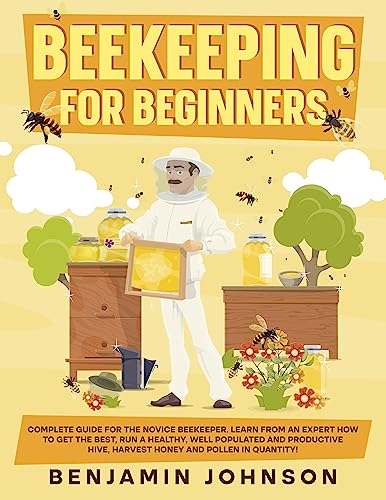
This image is property of Amazon.com.
7. Mead: The Oldest Alcoholic Beverage
Mead, often referred to as the “nectar of the gods,” is an alcoholic beverage made from fermented honey. Dating back thousands of years, mead holds a significant place in human history and continues to captivate individuals with its unique flavors and cultural traditions.
7.1 History of Mead
Mead is believed to be the oldest known alcoholic beverage, with traces of its production dating back to ancient civilizations. It has been valued by cultures around the world, from the Vikings in Northern Europe to the Mayans in Central America. Mead’s historical significance and cultural symbolism make it a fascinating drink for enthusiasts and history buffs alike.
7.2 Mead Making Process
The process of making mead involves fermenting honey with water and sometimes incorporating fruits, spices, or grains to create various flavor profiles. The fermentation process can take weeks or even months, allowing the flavors to develop and the alcohol content to rise. Mead making is often considered an art form, with enthusiasts experimenting with different ingredients and techniques to create their unique concoctions.
7.3 Varieties of Mead
Mead comes in a wide range of styles and flavors, catering to different tastes and preferences. From traditional mead, which emphasizes the flavors and characteristics of the honey, to melomels, which incorporate fruits, and metheglins, which include spices, there is a mead variety for every palate. Exploring the diverse world of mead can be a delightful journey into flavors and traditions from around the globe.
8. Bee Bread: Fermented Pollen Power
Bee bread, also known as “bee pollen bread,” is a potent superfood created through the natural fermentation of pollen collected by bees. This unique substance has been cherished for its nutritional value and potential health benefits.
8.1 Benefits of Bee Bread
Bee bread is packed with essential amino acids, vitamins, enzymes, and minerals, making it a nutrient powerhouse. It is believed to have energizing and immune-boosting properties, supporting overall well-being. Additionally, the fermentation process of bee bread enhances its digestibility and the bioavailability of its nutrients, making them easier for the body to absorb.
8.2 Bee Bread Recipes
While bee bread can be consumed on its own, it can also be incorporated into various recipes to enhance their nutritional value. From smoothies and energy bars to baked goods and salads, bee bread adds a unique flavor and nutritional boost to a wide array of culinary creations. Experimenting with bee bread recipes allows you to enjoy its benefits while exploring new and delicious ways to nourish your body.
8.3 Bee Bread as Supplements
For those looking for a convenient way to incorporate bee bread into their daily routine, supplements in the form of capsules or powders offer an easy solution. Bee bread supplements provide a concentrated dose of its powerful nutrients, making it convenient for individuals on the go or those who prefer a more controlled intake. As with any dietary supplement, it’s important to consult with a healthcare professional before adding bee bread to your routine.
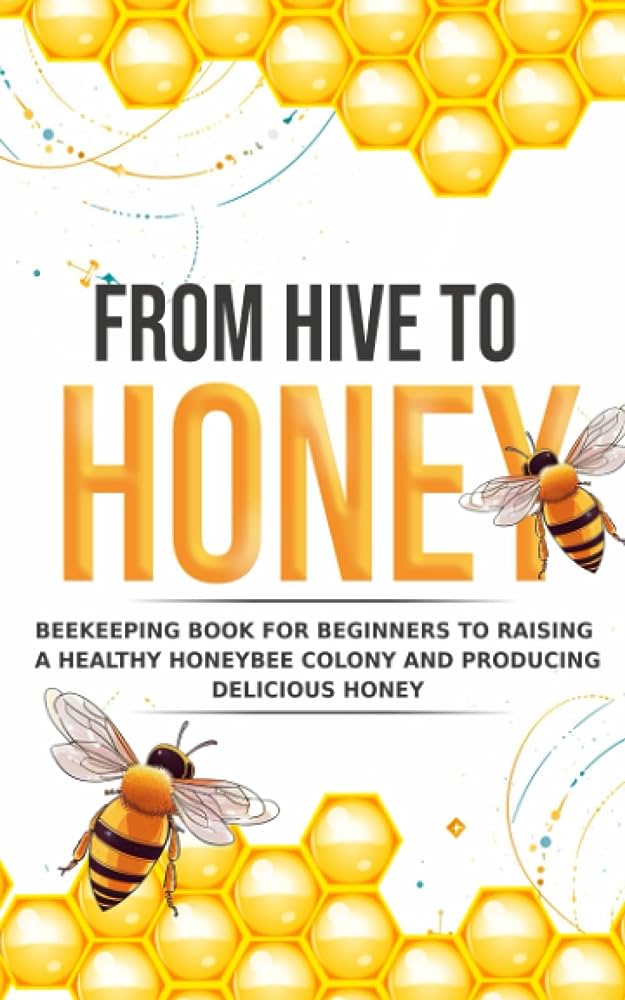
This image is property of Amazon.com.
9. Beeswax Polish: A Natural Homecare Solution
Beeswax polish is a versatile product that can revitalize and protect a wide range of surfaces in your home. Made from a combination of beeswax and other natural ingredients, this polish offers a natural and eco-friendly alternative to chemical-laden products.
9.1 Uses of Beeswax Polish
Beeswax polish can be used to restore and maintain the beauty of various surfaces, including wood furniture, leather goods, and metal fixtures. It nourishes and adds a protective layer to these surfaces, enhancing their appearance and durability. From rejuvenating an old wooden table to conditioning a leather sofa, beeswax polish is a valuable tool in keeping your home looking its best.
9.2 Homemade Beeswax Polish Recipe
If you enjoy getting crafty and prefer a DIY approach, making your own beeswax polish is easier than you might think. With just a few ingredients like beeswax, natural oils, and essential oils for fragrance, you can create a homemade polish that is tailored to your preferences. Not only does this allow you to customize the scent and consistency, but it also ensures that you know exactly what is going into the product you are using in your home.
9.3 Benefits of Beeswax Polish
Using beeswax polish provides a host of benefits for both your home and the environment. Unlike chemical-based polishes, beeswax polish does not emit toxic fumes and is safe to use around your family and pets. It nourishes and protects surfaces without leaving behind a sticky residue, allowing for easy maintenance and cleaning. Choosing beeswax polish means opting for a natural and sustainable solution that helps preserve both the beauty of your home and the planet.
10. Bee Brood: Nature’s Protein Source
Bee brood refers to the developing bees found within the honeycomb cells. While primarily consumed by bees themselves, bee brood has gained recognition as a nutrient-rich protein source with potential health benefits for humans.
10.1 Types of Bee Brood
Bee brood comes in two main forms: drone brood and worker brood. Drone brood consists of the male bees in the hive, while worker brood refers to the female bees. Each type of brood has its own unique nutrient composition and potential health benefits, offering a well-rounded source of protein.
10.2 Nutritional Value of Bee Brood
Bee brood is rich in protein, vitamins, minerals, and amino acids, making it a highly nutritious food source. It is especially valued for its high content of essential amino acids that our bodies cannot produce on their own. Incorporating bee brood into your diet can provide a sustainable and nutrient-dense protein option.
10.3 Bee Brood Recipes
While bee brood can be consumed on its own, it can also be used in various recipes to add a nutritional boost. From smoothies and energy bars to omelets and stir-fries, bee brood lends a unique flavor and texture to culinary creations. Experimenting with bee brood recipes allows you to explore new flavors while reaping the benefits of this protein-packed superfood.
In conclusion, the thriving beehive offers an array of remarkable products beyond honey. From the versatility of beeswax products to the potential health benefits of royal jelly, propolis, bee pollen, bee venom, and bee bread, the bee kingdom provides us with a bounty of nature’s treasures. In addition, the craftsmanship of honeycomb, the ancient tradition of mead, the natural homecare solution of beeswax polish, and the nutritious protein source of bee brood offer unique and diverse opportunities for discovery and enjoyment. Embrace the wonders of the beehive and explore the remarkable world of these extraordinary creatures.
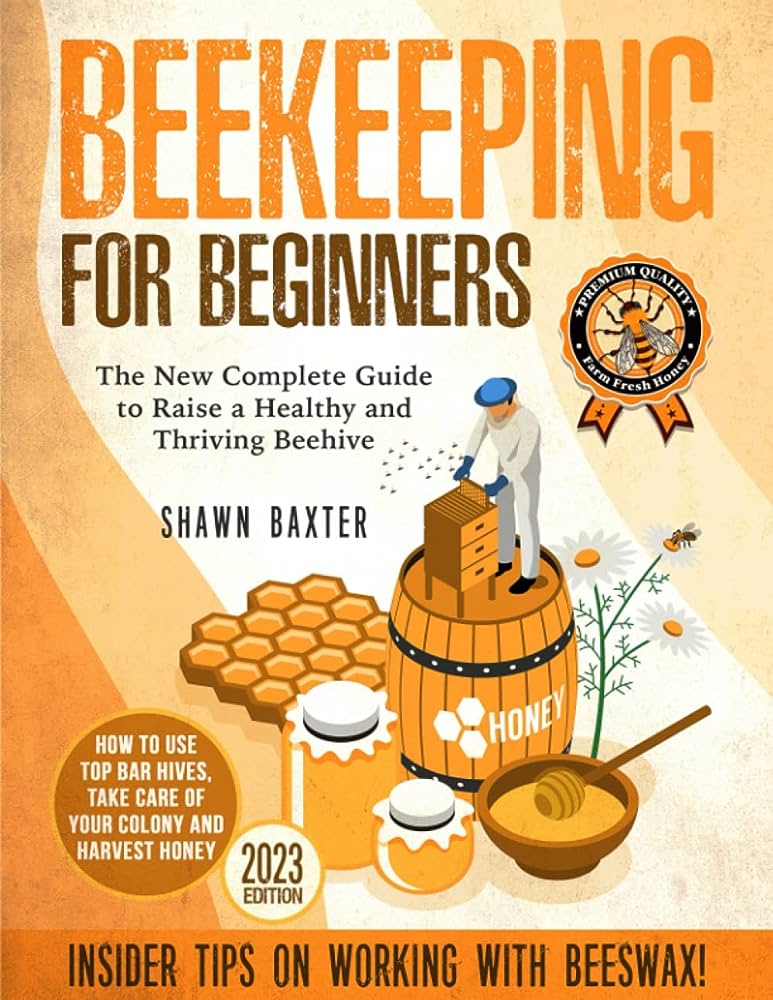
This image is property of Amazon.com.